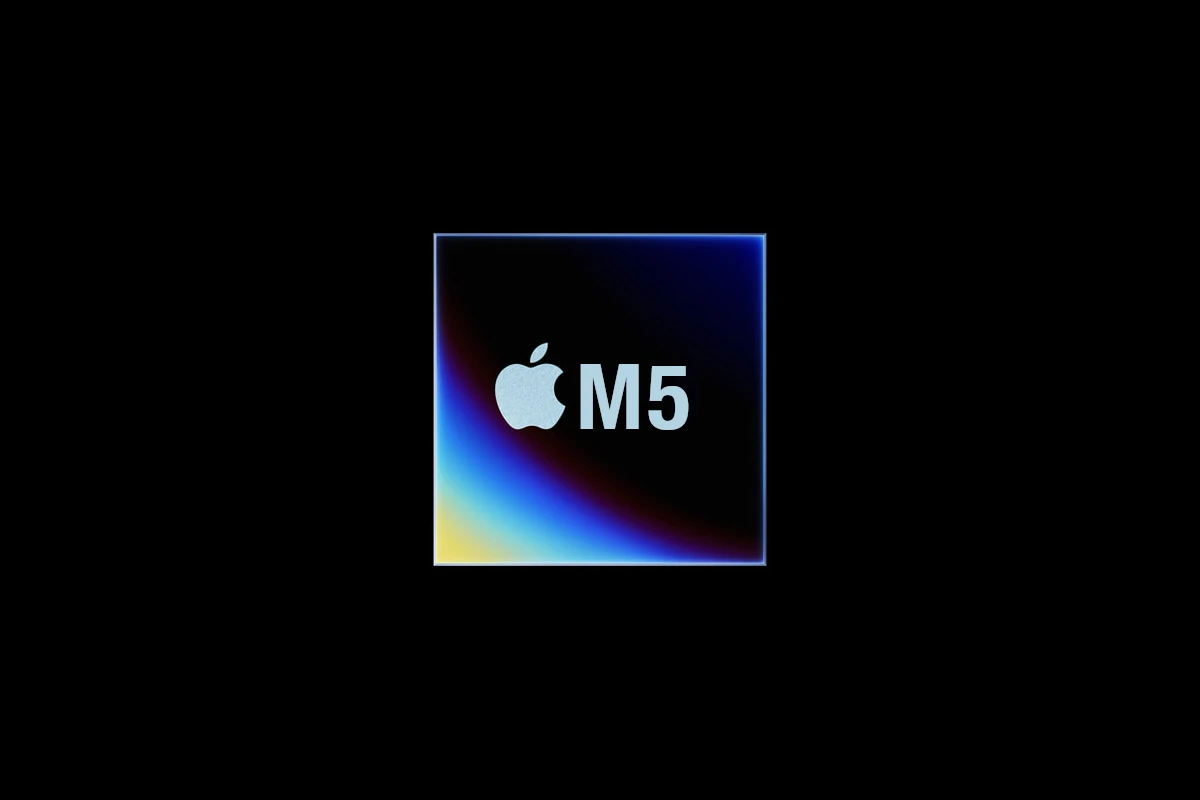Apple is gearing up to shake up the laptop market once again with the upcoming release of its MacBook Pro models powered by the next-generation M5 chip. Slated to arrive in late 2025, these new machines are expected to offer groundbreaking performance and efficiency, thanks to Apple’s ongoing partnership with TSMC and its advanced 3nm process technology. This move signals Apple’s commitment to pushing the boundaries of performance for professionals, creatives, and everyday users alike.
M5 Chip: The Next Evolution in Apple Silicon
The M5 series will include the standard M5, alongside the more powerful M5 Pro and M5 Max variants. These chips are poised to deliver substantial improvements over the current M3 lineup, potentially featuring higher core counts and improved AI processing capabilities—crucial for machine learning tasks, creative workflows, and future iterations of macOS optimized for AI-driven experiences.
Apple’s decision to skip the M4 for the MacBook Pro line suggests a strategic leap forward in performance and efficiency. According to industry sources, the M5 chip will leverage TSMC’s cutting-edge N3E process, an enhanced version of the current 3nm technology, which should result in better power efficiency and performance compared to its predecessors.

Performance and Efficiency: What to Expect
The M5 chips are expected to feature more performance cores, an upgraded GPU architecture, and better neural engine capabilities to support AI applications that are becoming increasingly integrated into everyday macOS tasks. With more businesses and professionals relying on AI for content creation, data analysis, and productivity enhancements, these performance boosts could significantly impact daily workflows.
Furthermore, TSMC’s use of System on Integrated Chip (SoIC) technology will allow Apple to stack chips vertically, improving communication speeds while reducing energy consumption. This innovation positions the M5-powered MacBook Pros to deliver superior performance without sacrificing battery life—an essential feature for mobile professionals.
Design: Sticking to a Winning Formula
While the internal components will see major changes, the design of the MacBook Pro is expected to remain largely unchanged. Apple will continue offering 14-inch and 16-inch models with the familiar Mini-LED displays, ProMotion support, and the durable aluminum chassis that professionals have come to love. However, there are whispers of potential display improvements, such as better HDR capabilities and higher peak brightness, which could enhance media consumption and creative work.
iPad Pro and the M5: A Delayed Introduction
Apple’s M5 chip won’t make its way to the iPad Pro until early 2026, diverging from the company’s usual pattern of introducing new chips across multiple product lines simultaneously. This delay may be attributed to Apple’s focus on optimizing the iPad Pro for the rumored OLED display upgrade and ensuring the M5 chip’s capabilities align with the tablet’s productivity and creative applications.
The Bigger Picture: AI, Efficiency, and the Future of macOS
The arrival of the M5 chip aligns with Apple’s increasing emphasis on AI and machine learning. With macOS Sequoia expected to introduce more AI-powered features, including smarter Siri interactions and on-device machine learning capabilities, the M5’s enhanced neural engine will likely play a pivotal role in delivering these experiences.
Additionally, the improved efficiency of the 3nm process could allow for longer battery life—a critical advantage for professionals working on the go. When combined with macOS’s resource management improvements, these performance gains could make the M5-powered MacBook Pros some of the most efficient and capable laptops on the market.
Key Takeaways
- New MacBook Pro models with M5 chips will launch in fall 2025
- The exterior design will stay the same as current models
- iPad Pro will receive M5 chips in early 2026
Overview of Apple’s Upcoming MacBook Pro M5
The new MacBook Pro models with M5 chips are set to deliver better performance, efficiency, and AI features. With advanced chip technology and a consistent design, Apple aims to lead in high-performance computing. As we near fall 2025, excitement builds for the M5-powered MacBook Pros, with users looking forward to experiencing the latest advancements in Apple Silicon.
Apple plans to introduce its next-generation MacBook Pro models featuring the M5 chip series in fall 2025, bringing significant improvements in processing power and energy efficiency through advanced 3-nanometer technology.
Anticipation for the M5 Chip
The M5 chip represents Apple’s latest advancement in custom silicon design. This new processor will build upon the architectural improvements introduced with the M4 series released in fall 2024.
The chip is expected to utilize TSMC’s enhanced 3-nanometer manufacturing process, enabling greater transistor density and improved power efficiency.
Transition from M4 Chip to M5
Apple’s shift from M4 to M5 maintains the company’s yearly upgrade cycle for MacBook Pro models. The M4 series brought 16GB RAM improvements and enhanced processing capabilities.
The M5 lineup will likely include three variants:
- M5 (base model)
- M5 Pro (mid-tier)
- M5 Max (high-end)
Improvements in Efficiency and Performance
The M5 chip is projected to deliver significant performance gains through its refined ARM-based architecture. Users can expect faster processing speeds and improved graphics capabilities.
Key improvements:
- Enhanced neural engine
- Advanced power management
- Upgraded GPU cores
- Better thermal efficiency
MacBook Pro Models Featuring the M5 Chip
The MacBook Pro lineup will retain its current form factors:
- 14-inch model
- 16-inch model
Both sizes will support the full range of M5 chip options, allowing users to configure their systems based on performance needs.
The Role of TSMC and 3-Nanometer Process Technology
TSMC’s 3-nanometer manufacturing process plays a crucial role in the M5 chip’s development. This advanced fabrication method enables:
More transistors per square millimeter leads to improved performance. The refined process allows for better power efficiency across all operating conditions.
The manufacturing improvements support Apple’s goals for increased computing power while maintaining reasonable battery life expectations.
Frequently Asked Questions
The MacBook Pro M5 series brings significant performance improvements, design refinements, and enhanced features compared to previous models.
What new features can be anticipated in the upcoming MacBook Pro M5 series?
The M5 chip will deliver improved processing power and energy efficiency. The display will retain the mini-LED technology with ProMotion adaptive refresh rates up to 120Hz.
The MacBook Pro M5 models will feature advanced Neural Engine capabilities for AI tasks. Users can expect faster memory bandwidth and improved graphics performance.
When is the expected release date for the new MacBook Pro M5 models?
Apple plans to launch the MacBook Pro M5 models in fall 2025. This timeline follows Apple’s typical annual upgrade cycle for MacBook Pro devices.
The release will precede the iPad Pro M5 models, which are expected in early 2026.
How will the MacBook Pro M5 performance differ from the previous generation models?
The M5 chip architecture will provide faster CPU and GPU speeds than the M4 and M3 generations. The new models will excel at professional tasks like video editing and 3D rendering.
The Neural Engine improvements will boost machine learning performance.
What will be the starting price range for the MacBook Pro M5 series?
The 14-inch MacBook Pro M5 will likely start at the same price point as current models. The 16-inch version will command a premium price.
Higher configurations with upgraded chips, storage, and memory will increase the cost accordingly.
Will the MacBook Pro M5 models offer options for expandable storage or memory upgrades?
The storage options will range from 512GB to 8TB SSD. Memory configurations will start at 16GB with options up to 96GB unified memory.
All components will be integrated into the system, with no user-upgradeable parts after purchase.
Are there any significant design changes expected with the new MacBook Pro M5?
The MacBook Pro M5 will maintain the current design language with aluminum chassis and black keyboard. The port selection will include Thunderbolt, MagSafe, and SDXC card slot.
The notched display and slim bezels from recent models will carry over to the M5 series.






